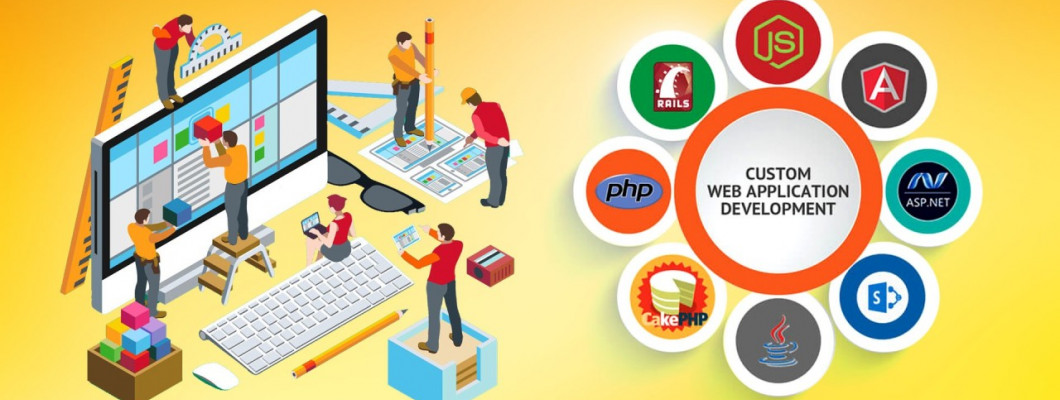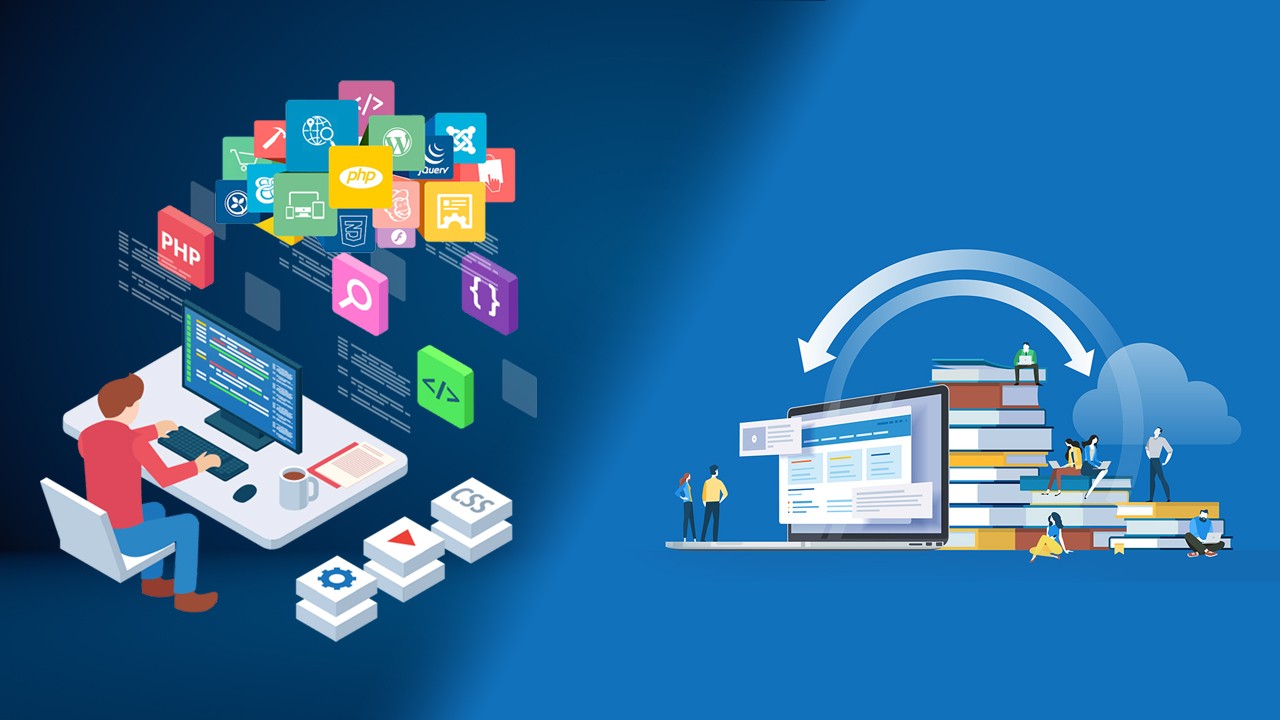
How Our WebApp Solutions Transformed Businesses: 6 Inspiring Case Studies
In today's digital age, web applications (web apps) are crucial tools for businesses looking to streamline operations, improve customer engagement, and drive growth. Custom-built web apps provide tailored solutions to meet specific business needs, ensuring companies operate more efficiently and effectively. This article presents case studies of how our web app solutions have empowered businesses to achieve significant growth by addressing their unique challenges and offering cutting-edge technological solutions.
Case Study 1: Enhancing Customer Engagement for an E-commerce Platform
Client Overview: A mid-sized e-commerce platform specializing in luxury apparel sought to improve customer engagement and enhance the shopping experience on their website. While they had a functional online store, they wanted to stand out in a highly competitive market by offering personalized and interactive features to keep customers returning.
Challenges: The client faced several challenges:
- Low customer retention rates due to a lack of personalized shopping experiences.
- High cart abandonment rates caused by a complex checkout process.
- Limited customer insights, which hindered the ability to offer tailored product recommendations.
- Personalized Recommendations Engine: Using AI algorithms, the app analyzed customer browsing and purchase history to provide personalized product suggestions, increasing cross-selling opportunities.
- Simplified Checkout Process: A streamlined, one-click checkout system was developed, reducing cart abandonment and improving conversion rates.
- Customer Dashboard: A user-friendly dashboard allowed customers to track their orders, manage Wishlist, and receive personalized offers and discounts based on their preferences.
- 25% increase in customer retention within the first six months.
- 35% reduction in cart abandonment rates due to the simplified checkout process.
- 15% boost in average order value due to personalized product recommendations.
Case Study 2: Streamlining Internal Operations for a Manufacturing Company
Client Overview: A manufacturing company specializing in custom machinery production had difficulty managing its complex operations. Their outdated systems for managing supply chains, production schedules, and customer orders were inefficient and caused delays.
Challenges: The client faced several operational challenges:
- Manual processes were prone to human errors and inefficiencies.
- A lack of real-time visibility into production and supply chain data caused delays in fulfilling customer orders.
- Inadequate communication between different departments, leading to misaligned priorities.
- Real-Time Inventory Management: The web app allowed the company to monitor raw material levels in real time, ensuring that production schedules could be adjusted based on inventory availability.
- Automated Workflow System: The app integrated with the production line to automate work orders, reducing manual data entry and human errors.
- Cross-Department Collaboration Tools: With integrated communication features, the app facilitated better coordination between the sales, production, and logistics teams, ensuring smoother transitions and aligned goals.
- 40% reduction in order fulfillment time due to more efficient production and inventory management.
- 30% improvement in productivity by automating manual tasks and reducing errors.
- Higher employee satisfaction due to improved collaboration and reduced operational bottlenecks.
Case Study 3: Driving Growth Through an Online Marketplace for Small Retailers
Client Overview: A startup aimed to create an online marketplace for small local retailers to showcase and sell their products. They wanted a web app that would make it easy for retailers to onboard, manage inventory, and connect with customers, while also offering consumers a unique shopping experience.
Challenges:
- Limited technical expertise and budget constraints made it difficult for the startup to develop the marketplace from scratch.
- Small retailers often lacked the digital tools needed to manage inventory and sales efficiently.
- The marketplace needed to be scalable to accommodate rapid growth and the onboarding of hundreds of retailers.
- Easy Vendor Onboarding: A simple, guided onboarding process allowed small retailers to list their products quickly without technical expertise.
- Inventory and Order Management Tools: Each retailer had access to an intuitive dashboard that helped them manage their inventory, process orders, and track sales.
- Customer Reviews and Ratings: A review system encouraged customer feedback, boosting retailer credibility and promoting trust among shoppers.
- Within the first year, the marketplace onboarded 150 small retailers, contributing to a 500% growth in user base.
- 30% increase in sales for participating retailers, as they were able to reach a broader audience through the platform.
- High customer satisfaction due to the seamless shopping experience and ability to discover unique local products.
Case Study 4: Improving Patient Engagement for a Healthcare Provider
Client Overview: A healthcare provider offering specialized medical services wanted to improve patient engagement and streamline appointment scheduling through a custom web app. They sought a solution that would allow patients to access their medical information, book appointments, and communicate with healthcare professionals easily.
Challenges:
- Patients had difficulty navigating the provider’s outdated website, leading to missed appointments and frustration.
- Manual appointment scheduling caused administrative bottlenecks.
- There was a lack of direct communication between patients and healthcare providers outside of scheduled visits.
Solution: We developed a custom patient portal that allowed for better interaction between patients and the healthcare provider. Key features included
- Online Appointment Booking: Patients could book, reschedule, or cancel appointments directly through the app, receiving automated reminders and reducing no-show rates.
- Medical Record Access: Patients could securely access their medical history, lab results, and treatment plans through the app.
- Direct Messaging: A secure messaging system enabled patients to communicate with healthcare providers, ask questions, and receive advice between visits.
- 20% reduction in missed appointments due to automated reminders and easier booking.
- Increased patient satisfaction, with 85% of users reporting that the web app improved their overall healthcare experience.
- Improved operational efficiency as administrative staff spent less time on appointment scheduling and patient inquiries.
Case Study 5: Expanding a Real Estate Platform’s Reach
Client Overview: A real estate company offering property listings and agent services sought to modernize its platform to reach a wider audience and improve property search functionality for users.
Challenges:
- The company’s existing platform was slow and lacked advanced search features, limiting user engagement.
- Property listings were outdated, and the process of adding new properties was inefficient.
- Agents had no direct way to interact with potential buyers through the platform, reducing conversion rates.
- Advanced Search Functionality: The app introduced filters based on location, price range, property type, and amenities, improving user experience.
- Automated Property Listings: Real estate agents could easily upload and manage property listings through an intuitive dashboard.
- Interactive Communication: Potential buyers could schedule virtual property tours and directly message agents through the platform.
- 50% increase in user engagement due to improved search functionality and a more modern design.
- Faster property turnover rates, as agents could manage listings more efficiently and communicate directly with prospective buyers.
- 35% boost in platform traffic, helping the company expand its market reach.
Case Study 6: Scaling an Educational Web App for a Learning Institution
Client Overview: A private educational institution that offered online courses needed to scale its existing web app to accommodate more students and offer a wider variety of courses.
Challenges:
- The existing platform was unable to handle the growing number of students, leading to frequent crashes and a poor user experience.
- There was no integrated system for managing course materials, assignments, and student progress.
- Limited communication tools made it difficult for instructors to interact with students outside of class.
- Scalable Infrastructure: We implemented a cloud-based architecture that could scale dynamically to accommodate more students as the platform grew.
- Course Management System: Instructors could upload course materials, track student progress, and assign homework through the web app.
- Enhanced Communication Tools: A live chat and discussion forum feature allowed for real-time interaction between students and instructors, fostering a collaborative learning environment.
- The platform successfully scaled to support 5,000+ students, a 300% increase in capacity.
- Higher student satisfaction, with 90% of users reporting a positive learning experience.
- 20% improvement in student performance, as the new features allowed for better engagement and support from instructors.
Conclusion
These case studies demonstrate the transformative impact that custom web app solutions can have on businesses across a variety of industries. Whether the goal is to enhance customer engagement, streamline operations, expand market reach, or improve internal processes, a tailored web app can provide the necessary tools to drive growth and success. Each business faced unique challenges, but with the right web app development approach, they were able to overcome these obstacles and thrive in their respective markets.

Leave a Comment